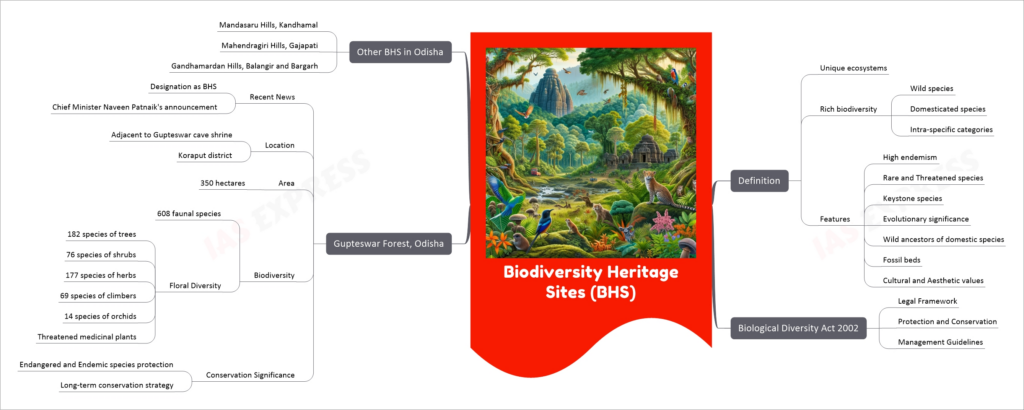Biodiversity-Heritage Site – Gupteswar Forest

Biodiversity Heritage Sites (BHS) are unique ecosystems characterized by their rich biodiversity, including a variety of wild and domesticated species. Under the Biological Diversity Act 2002, these sites are legally protected and managed for conservation. Recently, the Gupteswar Forest in Odisha’s Koraput district was designated as a BHS, joining other significant sites in the state like the Mandasaru, Mahendragiri, and Gandhamardan Hills. Spread over 350 hectares, Gupteswar Forest is home to 608 faunal species and a wide range of flora, playing a crucial role in the conservation of endangered and endemic species.
If you like this post, please share your feedback in the comments section below so that we will upload more posts like this.

